
Most small business owners and employees play many roles within the company. In some organizations, different members of the team jump in to help with marketing, and in other organizations, a single person must develop and execute the entire marketing strategy.
To find out how small businesses approach marketing, we’ve compiled the top statistics and trends. This blog will give insight into how small businesses handled marketing this year and what we can expect for 2018. Based on various research, here are ten statistics and trends for small business marketing in 2018.
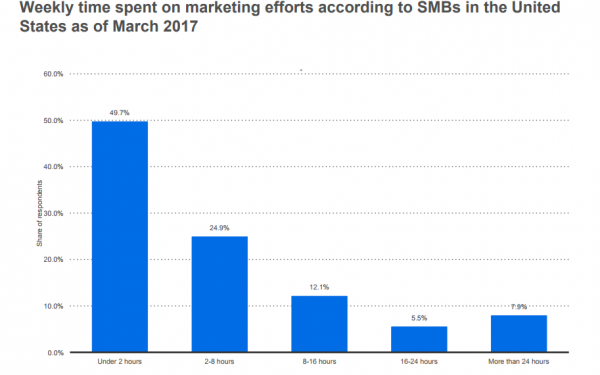
Most SMBs are underinvesting in marketing. Overall, small and medium-sized businesses should be building and strengthening their position in the market. Before diving into tactics, this baseline issue of underinvestment appears to be a common and pervasive issue with SMBs as we enter 2018.
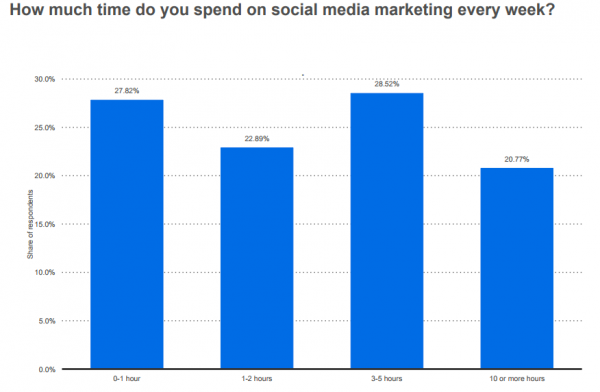
SMBs typically do not have time or resources to dedicate to marketing, which is why many do not spend the time needed to make the campaign succeed.
For SMBs in this situation, it’s essential to have a strategic marketing plan that can be automated. For those who only have two hours per week to spare, then those two hours should count towards working on the marketing strategy and overarching campaign, not taking care of nitty-gritty tasks like posting a blog or social media. SMBs should utilize tools for posting and scheduling and automate tasks when possible to maximize the marketing campaign reach in 2018.
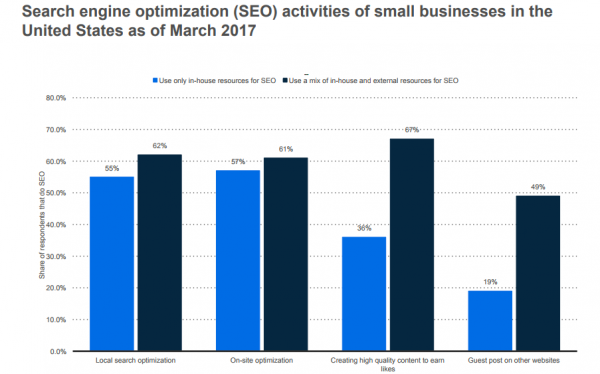
As opposed to using only in-house resources for SEO, more SMBs prefer to use a mix of in-house and external resources. Especially for tasks such as “creating high quality content to earn likes,” SMBs overwhelmingly (67% compared to 36%) use outside resources to help (Statistica). The reason for this could be attributed to not having SEO writers in-house or team members not understanding which type of content is appealing to the target market. External teams, on the other hand, are well-versed in creating content that gets clicked and shared.
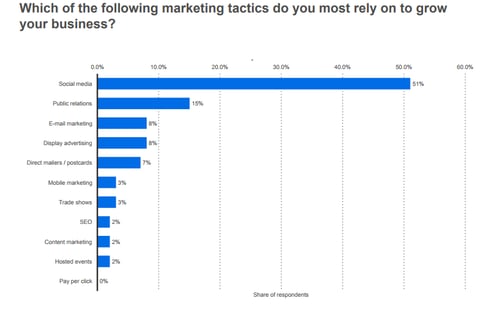
Social media is overwhelmingly the number one tactic used to grow a small business. Since pretty much every target market uses some social network on a daily basis, this tactic can drive traffic to a website and engage potential customers. Even with limited time, SMBs can use social media to capture their audience’s attention. Small businesses should be sure to watch which network their target audience uses in 2018, especially as new platforms launch.
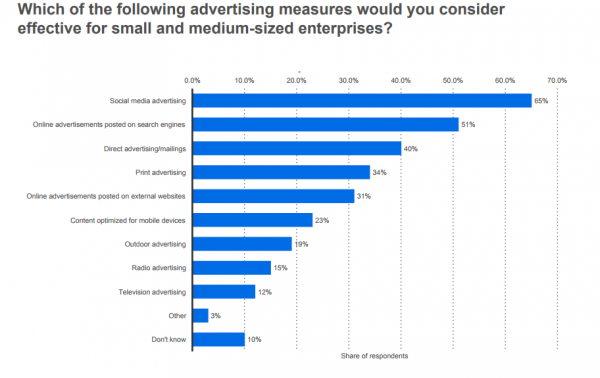
Companies of all sizes are transitioning from outbound to inbound marketing tactics (which is a trend that will definitely continue in 2018). Instead of direct mailing advertising tactics, organizations are finding it much more effective to launch ads on social networks to secure more prospects. The traditional forms of advertisement are not as impactful as social, which is why we’re seeing more companies take this route.
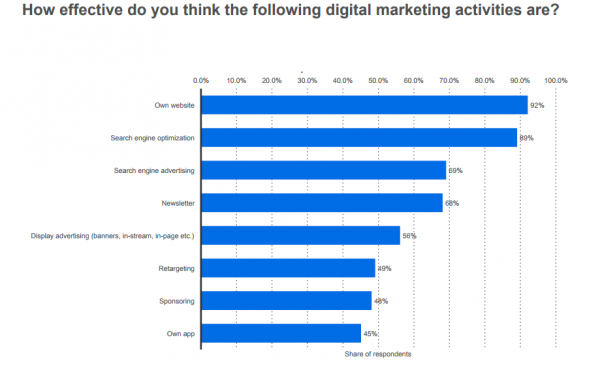
92% of small businesses think having a website is an effective digital marketing tactic and 89% think SEO helps as well (Statistica). These two combined (i.e., having an SEO-optimized website) is key for SMBs. Using proper keywords to target the right audience, having a dynamic user experience, and producing high-quality content on a regular basis will drastically increase the number of leads coming in. SMBs should make this a priority in the new year, either using in-house talent or outside resources to ensure a quality, optimized website.
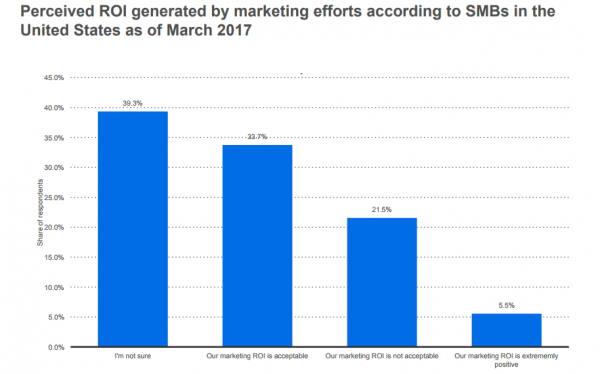
A significant shortcoming in medium and small business marketing is a lack of ROI or understanding of results. Many SMBs invest in marketing without understanding its performance. Looking ahead, smarter SMBs will invest in technologies and analytics to gain a deeper understanding of outcomes and performance. In turn, this will allow SMBs to gain a better handle on how to iterate, optimize, and improve their campaigns to drive greater results--earning them a better position in the market.
These two statistics show a common problem plaguing small businesses -- how do we measure our efforts? Given that many SMBs lack time and resources to devote to marketing, this does not come as a big surprise. However, all marketing efforts must be tracked to discover what works and what doesn’t for each campaign. Tracking ROI can begin by simply using Google Analytics to see how people behave when entering your website. Companies should audit digital marketing efforts so that they don’t waste time on campaign efforts that don’t convert. Even if it means spending less time on posting, measuring marketing efforts is crucial.
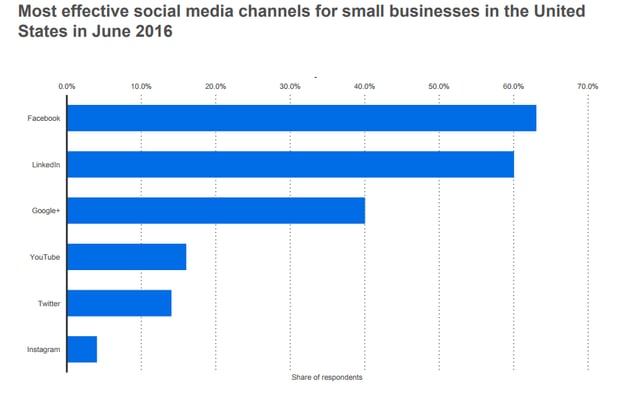
Facebook narrowly beats out LinkedIn as the most effective social media channel for small businesses, but this might change in 2018. It’s important for small businesses to continually track where their audience is and make sure to post and engage on that network. This can be done by tracking and measuring efforts to find out on which social networks audiences engage most.
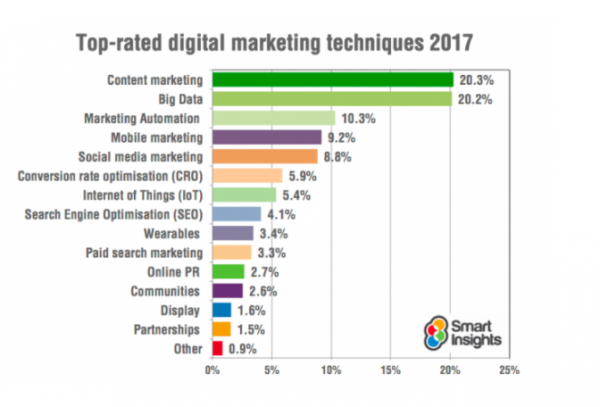
Content marketing is still the top-rated digital marketing technique, but big data is coming up closely behind. For small businesses, it’s important to remember to write content that aligns with the buyer’s journey, because, ultimately, that content will get prospects to convert. Given the usefulness of big data, it will be important that someone on that team become well-versed in analytics in order to maintain market competitiveness.
In 2018, we’re sure to see more SMBs using data to drive decisions, but certain techniques such as content marketing will still be extremely relevant. Small businesses that can combine writing good content based on data insights are sure to thrive in the new year.
Sources:
https://www.statista.com/study/42671/sme-marketing/
https://www.hubspot.com/marketing-statistics
by Jonathan Franchell, CEO of Ironpaper - For more tips and hacks: Need to remove a new line after h1 tags? Both web designers and SEO practitioners need to employ headline tags: H1, H2, H3 in several ways to improve web page structure and tag...

The Crowded Arena of the IT Marketplace Updated December 2024 The Information Technology (IT) landscape is experiencing rapid growth and intensifying competition. IT spending is projected to reach nearly 5.1 trillion U.S. dollars in 2024, a...

The marketing industry is transforming significantly due to generative AI and increasing market complexity. Gartner's prediction of a 25% decline in traditional search traffic suggests that the era of search engines is dying. AI tools, particularly...

Updated December, 2024 The field of digital marketing is evolving rapidly in response to new technology and changing buyer expectations. To help career-minded marketers, we’ve rounded up the top 10 skills needed to succeed in the field. These are...
